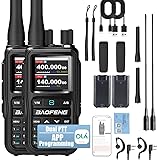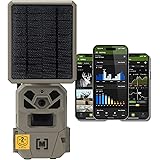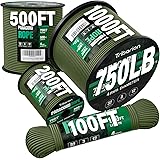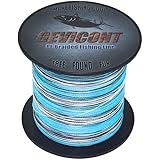Mastering Wilderness Survival: Essential Life-Saving Skills
Venturing into the wild offers unparalleled beauty and adventure. Yet, it also presents inherent risks. Unexpected events can transform a peaceful outing into a dire emergency. Therefore, possessing vital wilderness survival tips becomes not merely beneficial, but absolutely essential. The accompanying video offers a concise overview of practical, life-saving techniques. This article expands upon those critical insights, providing deeper context and actionable strategies for various survival scenarios. Embrace these skills. They could one day save your life.
Water Procurement and Purification Strategies
Hydration is paramount for survival. The human body cannot function long without water. Dehydration rapidly diminishes strength and cognitive function. Therefore, securing a safe water supply is a top priority in any survival situation.
Unconventional Water Boiling Methods
Boiling is the most reliable way to purify water. It eliminates harmful bacteria and viruses. What if you lack a metal pot? The video highlights an ingenious method: boiling water directly in a plastic bottle. This technique requires caution. Use thin plastic containers. Crucially, do not seal the lid. Pressure will build, causing an explosion. Instead, leave the opening unsealed. Place the bottle carefully into the flames. The water reaches boiling temperature. This kills pathogens. Use a stick or pliers to retrieve the hot bottle. Allow it to cool before drinking. This method proves invaluable when traditional cookware is unavailable.
Another ancient technique involves hot stones. Heat dry stones in a fire for at least an hour. Ensure stones are completely dry; wet stones can explode when heated. Carefully transfer the glowing hot stones into a wooden bowl or a survival blanket containing water. The heat from the stones transfers to the water. Bubbles signify boiling. This process renders the water safe for consumption. This method exemplifies resourcefulness under primitive conditions.
Filtering and Collecting Water
Filtering dirty water is an intermediate step. It removes larger sediment and some impurities. For this, a makeshift filter can be constructed. Cut a plastic bottle in half. Invert the top section into the bottom, forming a funnel. Fill the funnel with filtering materials. A tampon, cattail seeds, or charwood are excellent choices. Compress these materials firmly. Dirty water poured through this filter emerges cleaner. However, this filtered water is not automatically safe for drinking. It must still be boiled to kill microorganisms. Think of filtering as improving water clarity before true purification.
Rainwater collection is another vital skill. Direct rainwater from the ground can be contaminated. Instead, utilize a survival blanket. Lay the blanket on a declining surface. Anchor its edges with branches or stones. Rainwater will trickle down the blanket. It collects at the lowest point. This provides a fresh, clean source of hydration. Always consider environmental factors. Rainwater touching the ground picks up contaminants rapidly.
When rain is absent, snow offers an alternative. However, eating snow directly is detrimental. It lowers your core body temperature. This expends precious energy. Instead, melt snow using a plastic bag or aluminum foil. Place these containers near a fire. If no fire exists, use body heat. Make small pouches. Place snow inside. Keep these pouches close to your body. The sun’s warmth also aids melting. Prioritize melting over direct consumption.
Extreme Hydration: Urine Distillation
In dire straits, urine can be distilled for hydration. This is an extreme measure. It requires a heat source. Collect urine in one bottle. Cut a hole in a second bottle. Place the urine bottle directly in flames. Position the holed bottle over the opening of the first. Water evaporates from the urine. It condenses on the walls of the second bottle. This condensed water is potable. It is free from salts and toxins. This process is a testament to the ingenuity required for survival.
The act of sucking on a smooth stone offers temporary relief from thirst. It stimulates saliva production. This moistens the mouth. However, it does not prevent dehydration. It merely provides psychological comfort and fleeting physical relief. Never confuse this with actual rehydration.
Fire Craft Essentials for Wilderness Survival
Fire provides warmth, light, cooks food, purifies water, and offers psychological comfort. It is a cornerstone of wilderness survival. Mastering fire starting techniques is therefore crucial.
Improvised Fire Starters
The video reveals a highly effective, though unconventional, fire starter. Special forces often employ it. Carefully open a bullet cartridge case. Access the nitro powder inside. This powder burns intensely hot. It ignites tinder even in wet conditions. Extreme caution is vital. Handle explosives with utmost care. This method is for emergency use only. Always prioritize safety.
A pencil sharpener serves an unexpected purpose. It efficiently creates fine wood shavings. These shavings, known as tinder, ignite easily. They catch a spark or flame readily. Keep a pencil sharpener in your survival kit. It simplifies fire preparation immensely. Small branches become instant fuel.
Charwood is another essential material. It is a highly flammable tinder. Charwood also works well in windy conditions. To make charwood, place small wooden chips in a metal box. Heat the box over a fire. The wood chars without burning completely. It becomes a carbonized fuel. This material can be prepared beforehand. It provides a reliable fire starting aid.
Kinder Egg Survival Kits
Waterproof storage is vital for fire starting materials. Kinder egg capsules are perfect for this. Fill one capsule with a petroleum jelly-soaked tampon. This creates a long-burning, robust fire starter. Fill another with dry matches. These sealed containers protect your fire starting kit. They ensure readiness for any weather condition. Such small, clever preparations significantly boost survival chances.
Shelter, Warmth, and Personal Care
Maintaining core body temperature is critical. Hypothermia is a silent killer in cold environments. Adequate shelter and proper insulation are non-negotiable.
The Versatile Survival Blanket
A survival blanket offers more than warmth. It reflects body heat. It also provides an ingenious solution for snow blindness. Snow blindness occurs from prolonged exposure to UV rays reflected by snow. Tie a strip of the blanket around your head. Position it like a blindfold. The semi-transparent material acts as makeshift sunglasses. It filters harmful UV rays. This protects your eyes from damage. This multi-purpose tool is invaluable.
Drying Wet Footwear
Wet feet in cold weather lead to frostbite. They accelerate hypothermia. Drying shoes quickly is therefore paramount. Heat stones in a fire. Boil them to a maximum of 100 degrees Celsius (212 degrees Fahrenheit). This prevents damage to shoe linings. Place these warm stones inside your shoes. For faster results, position the shoes near the fire too. This method effectively dries footwear. It preserves foot health.
Body Temperature Regulation
To prevent hypothermia at night, prioritize core warmth. A hot water bottle, if available, is ideal. Place it centrally on your body. Focusing on warming cold feet is less efficient. It costs more energy. The body prioritizes warming vital organs. Aid this natural process. Keep your torso warm.
The Inuit developed a simple hypothermia test. Attempt to touch your little finger with your thumb. If this movement is difficult, or impossible, your hands are too cold. Immediate warming is necessary. Place hands under armpits. Warm them by a fire. This test serves as an early warning system. Heed its message. Cold hands hinder vital tasks like fire building. They increase risk of death.
Improvised gloves offer crucial hand protection. Remove a sock. Stuff it with dry leaves or cattail seeds. Place your hand inside. The packed material provides insulation. This technique can insulate other clothing as well. It offers a barrier against freezing temperatures. Resourcefulness is key to enduring cold environments.
Wilderness Hygiene: Dental Care and Toxins
Long-term survival necessitates maintaining hygiene. Charwood proves surprisingly effective for dental care. Its sterile, rough surface cleans teeth. It acts like a natural abrasive toothpaste. For better results, break up the fibers of a fresh branch. Use this frayed end as a toothbrush. The fibers reach between teeth. This simple practice prevents infections. It maintains oral health over extended periods.
Charwood possesses another life-saving property. It binds toxins. This makes it ideal for water filtration. It removes some chemical contaminants. Moreover, charwood can be used as a marker or writing tool. Its versatility in survival situations is immense. It truly is a multi-functional material.
Food Acquisition and Tool Improvisation
Sustaining energy requires food. Knowing how to procure and prepare it safely is another critical wilderness survival skill.
Foraging for Pine Cone Seeds
Pine cones offer a surprising food source. The little seeds between their scales are edible. You need about 29 pine cones for a substantial amount. Opening them with pliers or a knife is possible. A more efficient method involves heat. Place cones in a pot next to a fire. The scales naturally open. The seeds then fall out. This provides a calorie-rich snack. It sustains energy levels.
Boiling an Egg Without a Pot
Cooking an egg without a pot is a novel skill. First, make a fire. Prepare a stick. Gently crack open the top of the eggshell. Place the egg directly into the embers. Do not make the fire too hot; this could cause the egg to explode. When cooked, use the stick to retrieve it. The stick also helps peel the hot egg. Enjoy this simple protein source. It demonstrates ingenious cooking methods.
Safe Wood Splitting: The Sissy Stick
Chopping wood with an axe can be dangerous. Especially if untrained. The video introduces the “sissy stick.” This is a small, split branch. Its flat side provides a stable grip. Use it to stabilize the log you wish to split. This method enhances safety significantly. It prevents axes from glancing off. It ensures a controlled, effective split. Prioritize safety with all tools.
The lessons shared here, and in the video, underscore a vital truth: preparedness. These wilderness survival tips are not just theoretical knowledge. They are practical skills. Practice them regularly. Familiarity breeds competence. Competence breeds confidence. In a real survival situation, these attributes are invaluable. They greatly increase your chances of enduring. Always remember, you can be good or you can be lucky. However, you cannot be trained to be lucky. Training and practice ensure readiness for any survival situation.











